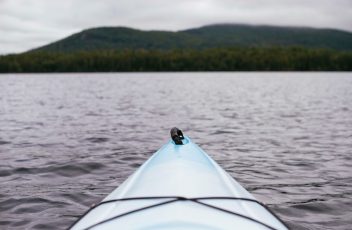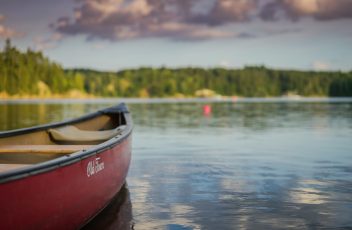Understanding kayak shipping costs is essential for anyone who wants to transport their kayak from one location to another. Whether you are a professional kayaker or a recreational enthusiast, knowing the ins and outs of kayak shipping costs can save you time, money, and stress. In this article, we will explore the basics of kayak shipping costs, the factors that affect these costs, how to calculate them, and tips for saving money. We will also discuss common mistakes to avoid when shipping your kayak, choosing the right packaging, insurance and liability coverage options, international kayak shipping, and finding a reliable shipping service provider.
Key Takeaways
- Kayak shipping costs depend on factors such as distance, weight, and carrier.
- Calculating the cost of shipping your kayak involves knowing the dimensions and weight of your kayak.
- Comparing shipping rates from different carriers can help you save money on kayak shipping costs.
- To save money on kayak shipping costs, consider packaging your kayak yourself and using a reliable carrier.
- When shipping internationally, be aware of customs regulations and additional fees.
Understanding the Basics of Kayak Shipping Costs
Kayak shipping costs refer to the expenses associated with transporting your kayak from one place to another. These costs can vary depending on several factors such as distance, weight, packaging, and the shipping carrier you choose. It is important to understand these basics in order to make informed decisions about shipping your kayak.
Factors That Affect the Cost of Shipping Your Kayak
Several factors can affect the cost of shipping your kayak. The distance between the pickup and delivery locations is one of the most significant factors. The longer the distance, the higher the shipping cost will be. The weight of your kayak is another important factor. Heavier kayaks will require more resources to transport and may incur additional fees.
Packaging is also a factor that affects shipping costs. Proper packaging ensures that your kayak arrives at its destination in good condition. However, bulky or excessive packaging can increase the size and weight of your shipment, resulting in higher shipping costs.
How to Calculate the Cost of Shipping Your Kayak
| Factor | Description |
|---|---|
| Weight | The weight of the kayak is a major factor in determining the cost of shipping. The heavier the kayak, the more expensive it will be to ship. |
| Dimensions | The size of the kayak also plays a role in shipping costs. Larger kayaks will require more space on the shipping truck or plane, which can increase the cost. |
| Distance | The distance between the shipping origin and destination is a key factor in determining the cost of shipping. Longer distances will generally result in higher shipping costs. |
| Shipping Method | The shipping method chosen will also impact the cost of shipping. Ground shipping is typically less expensive than air shipping, but may take longer to arrive. |
| Insurance | Adding insurance to the shipment can increase the cost, but it can also provide peace of mind in case the kayak is lost or damaged during shipping. |
Calculating the cost of shipping your kayak can be done by following a few simple steps. First, determine the dimensions and weight of your kayak. Measure the length, width, and height of your kayak and multiply these measurements together to get its volume. Next, weigh your kayak and record its weight in pounds.
Once you have these measurements, you can use an online shipping calculator or contact shipping carriers directly to get a quote. Provide the carrier with the pickup and delivery addresses, as well as the dimensions and weight of your kayak. They will be able to provide you with an estimate of the shipping cost based on this information.
Comparing Shipping Rates from Different Carriers
When it comes to shipping your kayak, it is important to compare rates from different carriers to ensure you are getting the best deal. Start by researching different shipping companies and their services. Look for carriers that specialize in kayak shipping or have experience transporting oversized items.
Contact each carrier and provide them with the details of your shipment, including the dimensions and weight of your kayak, as well as the pickup and delivery addresses. Ask for a detailed quote that includes all fees and surcharges. Compare these quotes to find the most affordable option that meets your needs.
Tips for Saving Money on Kayak Shipping Costs

There are several practical tips you can follow to save money on kayak shipping costs. First, consider reducing the weight of your kayak by removing any unnecessary accessories or gear. This will not only lower the shipping cost but also make it easier to handle and transport.
Another way to save money is by choosing the right packaging for your kayak. Opt for lightweight but durable materials that provide adequate protection. Avoid excessive packaging that adds unnecessary weight and size to your shipment.
Common Mistakes to Avoid When Shipping Your Kayak
When shipping your kayak, there are some common mistakes that you should avoid. One of the most common mistakes is not properly measuring and weighing your kayak. Accurate measurements and weight are crucial for calculating shipping costs and ensuring that your kayak fits within the carrier’s size and weight restrictions.
Another mistake is not properly securing your kayak inside its packaging. Make sure to use sufficient padding and secure all loose parts to prevent damage during transit. Additionally, failing to properly label your package with the pickup and delivery addresses can result in delays or misplacement of your kayak.
Choosing the Right Packaging for Your Kayak
Choosing the right packaging for your kayak is essential to ensure its safe transportation. There are several types of packaging available, including cardboard boxes, hard-shell cases, and custom-made kayak bags. Each option has its own advantages and disadvantages.
Cardboard boxes are affordable and readily available, but they may not provide sufficient protection for your kayak. Hard-shell cases offer excellent protection but can be expensive and bulky. Custom-made kayak bags are specifically designed for kayaks and provide a good balance between protection and convenience.
Insurance and Liability Coverage for Kayak Shipping
When shipping your kayak, it is important to consider insurance and liability coverage options. Most shipping carriers offer basic liability coverage that protects against loss or damage during transit. However, this coverage may have limitations and exclusions.
If you have a valuable or expensive kayak, you may want to consider purchasing additional insurance coverage. This will provide extra protection in case of loss, damage, or theft. Be sure to read the terms and conditions of any insurance policy carefully to understand what is covered and what is not.
International Kayak Shipping: What You Need to Know
Shipping a kayak internationally involves additional regulations and requirements. Before shipping your kayak overseas, research the customs regulations of the destination country. Some countries may require specific permits or documentation for importing kayaks.
You will also need to consider the logistics of international shipping, such as customs duties, taxes, and import fees. These costs can vary depending on the country and the value of your kayak. It is important to factor these expenses into your budget when planning international kayak shipping.
Finding a Reliable Kayak Shipping Service Provider
Finding a reliable kayak shipping service provider is crucial to ensure the safe and timely delivery of your kayak. Start by researching different providers and reading customer reviews. Look for companies that have experience in kayak shipping and positive feedback from previous customers.
When contacting potential providers, ask about their experience, insurance coverage, and any additional services they offer. Request references from previous customers and follow up with them to get their feedback on the provider’s services. Choose a provider that offers competitive rates, reliable tracking, and excellent customer service.
Understanding kayak shipping costs is essential for anyone who wants to transport their kayak from one location to another. By understanding the basics of kayak shipping costs, the factors that affect these costs, how to calculate them, and tips for saving money, you can make informed decisions and ensure a smooth shipping process. Avoid common mistakes, choose the right packaging, consider insurance and liability coverage options, be prepared for international shipping, and find a reliable shipping service provider. By following these guidelines, you can save time, money, and stress when shipping your kayak.








